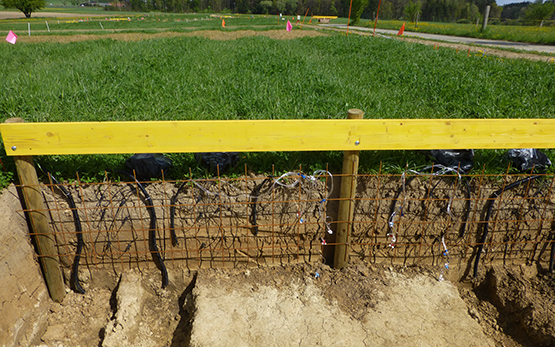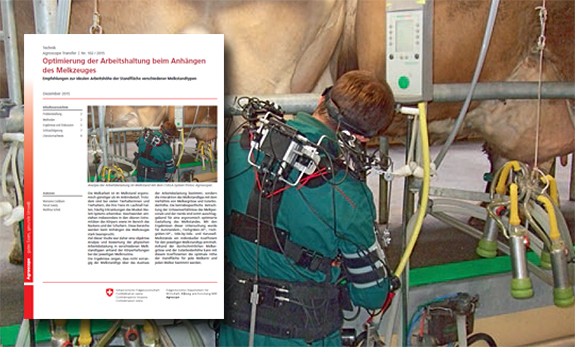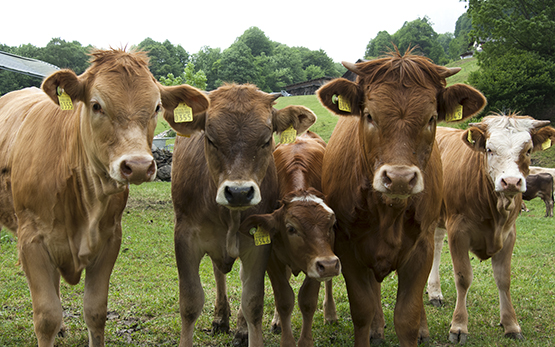Heller O., Di Bene C., Nino P., Huyghebaert B., Arlauskienė A., Castanheira N. L., Higgins S., Horel A., Kir A., Kizeková M., Lacoste M., Munkholm L. J., O'Sullivan L., Radzikowski P., Rodríguez-Cruz M. S. und weitere
Towards enhanced adoption of soil‐improving management practices in Europe.
European Journal of Soil Science, 75, (2), 2024, 1-17.
Jarvis N., Coucheney E., Lewan E., Kloeffel T., Meurer K.H.E., Keller T., Larsbo M.
Interactions between soil structure dynamics, hydrological processes, and organic matter cycling: A new soil‐crop model.
European Journal of Soil Science, 75, (2), 2024, 1-24.
Arrázola-Vásquez E., Larsbo M., Capowiez Y., Taylor A., Herrmann A., Keller T.
Estimating energy costs of earthworm burrowing using calorimetry.
European Journal of Soil Biology, 121, 2024, 1-9.
Heller O., Schittli D., Bragazza L., Ghiasi S., Guillaume T., van der Heijden M., Köstel J. K., Mayer J., Wittwer R., Keller T.
Can we manage soil structure for improved resistance against droughts and extreme rainfall events?: Preliminary results from the SoilX Project.
In: BGS Tagung 2024. 21 March, Zollikofen. 2024, 1.
Garland G., Köstel J. K., Johannes A., Heller O., Doetterl S., Or D., Keller T.
Perspectives on the misconception of levitating soil aggregates.
Soil, 10, 2024, 23-31.
Alakukku L., Heitman J., Horn R., Jansen B., Keller T., McKenzie B. M., Neollemeyer E., Peng X., Wendroth O.
Soil & Tillage Research Editorial.
Soil & Tillage Research, 237, 2024, 1-2.
Widmer A., Tamagni L., Wüst C., Paul S. M., Volpe V., Jocher M., Giger R., Dötterl S., Keller T., Leifeld J.
Mitigating greenhouse gas emissions from managed organic soils in the temperate zone by paddy rice cultivation.
In: EGU General Assembly 2024. 14-19 April, Hrsg. European Geosciences Union (EGU), Vienna (AT). 2024, 1.
Albrecht M., Bossart S., Tschanz P., Keller T., Sutter L.
Grassland extensification enhances nest densities of ground-nesting wild bees.
Journal of Applied Ecology, 00, 2023, 1-11.
de Lima R. P., Rolim M. M., Torres L. C., Cavalieri-Polizeli K. V. M., Keller T.
Modelagem da compactação do solo induzida pelo tráfego agrícola.
In: Tópicos em Ciência do Solo. Band 12, Hrsg. Sociedade Brasileira de Ciência do Solo, 2023.
Sjulgård H., Keller T., Garland G., Colombi T.
Relationships between weather and yield anomalies vary with crop type and latitude in Sweden.
Agricultural Systems, 211, 2023, 1-9.
Blomquist J., Englund J.-E., Sjöberg C., Kårhammer J., Svensson S.-E., Pettersson E., Keller T., Berglund K.
Structure liming reduces draught requirement on clay soil.
Soil and Tillage Research, 231, 2023, 1-6.
Schjønning P., Lamandé M., De Pue J., Cornelis W. M., Labouriau R., Keller T.
The challenge in estimating soil compressive strength for use in risk assessment of soil compaction in field traffic.
Advances in Agronomy, 178, 2023, 61-105.
Keller T., Karlen D. L., Hallett P. D.
Soil tilth.
In: Encyclopedia of Soils in the Environment. 2nd edition, Elsevier. 2023, 48-56.
Nazari M., Arthur E., Lamandé M., Keller T., Bilyera N., Bickel S.
A meta-analysis of soil susceptibility to machinery-induced compaction in forest ecosystems across global climatic zones.
Current Forestry Reports, 9, 2023, 370-381.
Tschanz P., Köstel J. K., Volpe V., Albrecht M., Keller T.
Morphology and temporal evolution of ground-nesting bee burrows created by solitary and social species quantified through X-ray imaging.
Geoderma, 438, 2023, 1-13.
Hiltebrand C., Roig-Pons M., Baumgartner M., Cockburn M., Doetterl S., Bachmann I., Keller T., Briefer S., Würbel H., Gmel A., Pauler C., Schneider M. K., Nasser R.
Laufende Versuche auf Agroscope-Forschungsterrain St.Aubin.
In: Jeudi au Haras. 20. Juli, Avenches. 2023, 1.
weitere Sprachen: französisch
Bahrami M., Naderi-Boldaji M., Ghanbarian D., Keller T.
Discrete element modelling of stress propagation in soil under a rigid wheel in a soil bin: A simulation of probe inducing stress deviation and wheel speed.
Biosystems Engineering, 230, 2023, 159-170.
van den Akker J.J.H., ten Damme L., Lamandé M., Keller T.
Compaction.
In: Encyclopedia of Soils in the Environment. 2nd Edition, Elsevier. 2023, 85-99.
Heller O., ten Damme L., D'Hose T., Euteneuer P., Fér M., Goberna M., Jarvis N., Keller T., Köstel J. K., Mehdi-Schulz B., Munkholm L.J.
Management impacts on soil structure: Evidence from twelve European long-term experiments.
In: BONARES Conference. 15. Mai, Berlin. 2023, 1.
Tschanz P., Vogel S., Walter A., Keller T., Albrecht M.
Nesting of ground-nesting bees in arable fields is not associated with tillage system per se, but with distance to field edge, crop cover, soil and landscape context.
Journal of Applied Ecology, 60, (1), 2023, 158-169.








